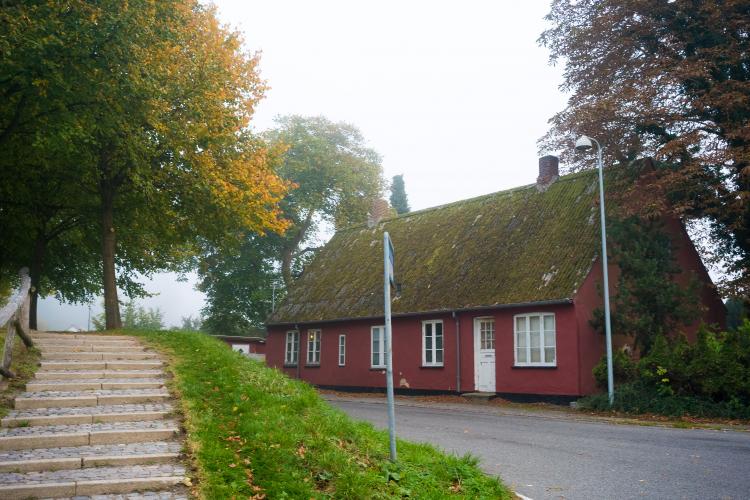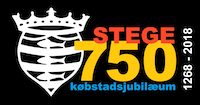Madam Bertelsen's house
Møllebrøndsstræde was formerly named Nørrestræde. It stretches today exactly as in the 17th century, where this stretch and the embankment encircled the town’s hop garden. The garden provided the town's breweries with hops for beer brewing.
Once you have passed by the hedge on the right side of Møllebrøndsstræde, a path leads up on the embankment. From here, you can see an old pump in the bottom of the moat which provided the people in town as well as the inhabitants of Stege Mark with clean spring water in the 1900s. This was used especially for cooking and washing laundry as many wells in those days contained a large amount of ochre.
The water pump and the life unfolding around this is well described by Gustav Wied in the book ‘Childlike Souls’. Gustav Wied lived for a period of time in Møn and married one of the daughters of the Tutein family at Marienborg Estate. Before the marriage, he lodged with ‘Madam Bertelsen at the ramparts in Stege’, in the red wash house located on the corner between Møllebrøndsstræde and Rådhusgade. Rådhusgade was back then named ‘Skammestræde’.
Here, where the present street of Rådhusgade – i.e. ‘Town Hall Street ‘- crosses the ramparts, the middle town gate out of the three town gates was situated.
Colonel Plessen had been awarded Nygårde in Damsholte as his summer residence. But with an extended contempt for all matters having to do with Møn, he tore down one of the town gates in 1690 – and with this probably also the ring wall of the ramparts – in order to acquire enough stones to expand Nygårde (the later Marienborg Estate) and to build the chimneys for the approx. 400 guard homes built in Møn. For each chimney, 300 stones were required. This almost total destruction of Stege’s fortifications has been called ‘The greatest theft in the history of Møn!’




